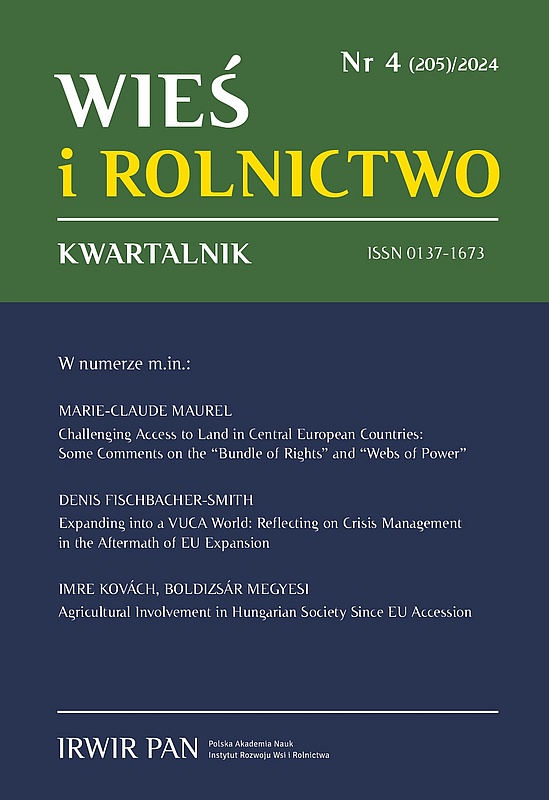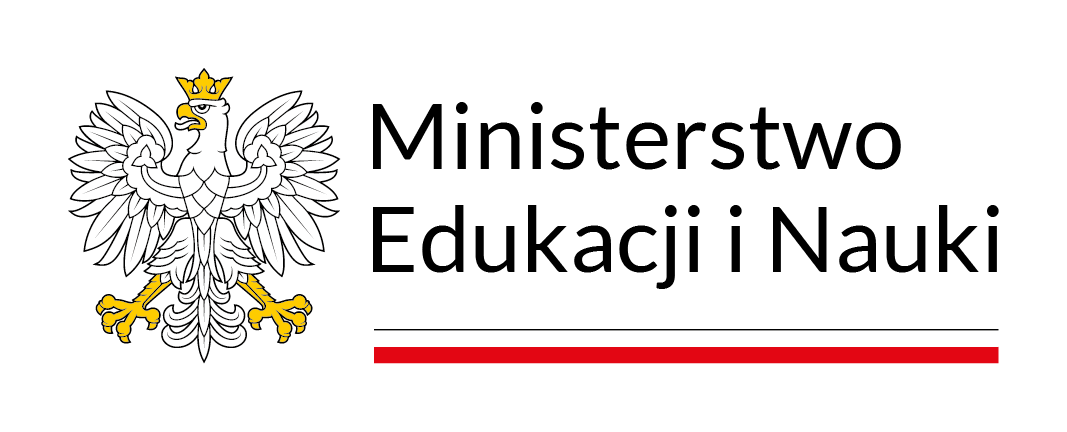Challenging Access to Land in Central European Countries: Some Comments on the “Bundle of Rights” and “Webs of Power”
DOI:
https://doi.org/10.53098/wir.2024.4.205/01Keywords:
access to land, property rights, land ownership, bundle of rights, webs of powerAbstract
Access to land is often presented as a matter of simple national legal norms. This article develops an empirical analysis of how the conditions of access to farm land were set up in the wake of the restoration of private property as part of the transition to a market economy, and then changed following the accession of Central European countries to the EU. It shows how legal and social norms overlap, combine and contradict each other, reflecting the evolving power dynamics between land holders, land owners or farmers, land-market control agencies and national authorities. Land concentration is the result of competition between social actors to capture and consolidate a “bundle of rights” over land and capital. Recent changes in land-tenure regulations have eased the emergence of “webs of power” that are characteristic of a new agrarian capitalism.
References
Alexandri C., Giurca D., Luca L., Ghib M. (2020). L’agriculture en Roumanie, entre transformation et coexistence des modeles. Le Déméter 2020, 161–176. DOI: https://doi.org/10.3917/iris.abis.2020.01.0161
Amblard L., Colin J.-P. (2009). Reverse tenancy in Romania: Actors’ rationales and equity outcomes. Land Use Policy, 26(3), 828–836. DOI: https://doi.org/10.1016/j.landusepol.2008.10.008
Benda-Beckmann F., Benda-Beckmann K., Wiber M. (2006). The properties of property. In: F. Benda-Beckmann, K. Benda-Beckmann, M. Wiber (eds.). Changing Properties of Property (pp. 1–39). New York, Oxford: Berghahn Books. DOI: https://doi.org/10.3167/9781845451394
Ciaian P., Drabik D., Falkowski J., Kancs A. (2017). New Regulations Governing Land Sales in Central and Eastern Europe: Imposing Restrictions via Particularised Institutions. Luxembourg: Publications Office of the European Union.
Colin J.-P. (2014). La concentration fonciere par la tenure inversée (reverse tenancy). Études Rurales, (194), 203–218. DOI: https://doi.org/10.4000/etudesrurales.10194
Davidova S., Bailey A., Dwyer J., Erjavec E., Gorton M., Thomson K. (2013). Semi-subsistence Farming: Values and Directions of Development. Brussels: European Parliament.
EC [European Commission] (2021). Direct payments to agricultural producers: Graphs and figures. Financial year 2021. https://agriculture.ec.europa.eu/system/files/2023-03/direct-aid-report-2021_en.pdf (access: June 2024).
Eurostat (2020). Farm Structure Survey. Eurostat Database. https://ec.europa.eu/eurostat/fr/web/main/data/database (access: May 2023).
FADN [Farm Accountancy Data Network] (2019). FADN database. https://agridata.ec.europa.eu/extensions/FarmEconomyFocus/FADNDatabase.html (access: May 2020).
Győry A., Kovách I. (2023). The new dimension of social inequality: The agricultural land use structure and the development level of settlements. Social Sciences, 12(88). DOI: https://doi.org/10.3390/socsci12020088
Halamska M. (2016a). The evolution of family farms in Poland: Present time and the weight of the past. Eastern European Countryside, 22(1), 27–51. DOI: https://doi.org/10.1515/eec-2016-0002
Halamska M. (2016b). Processes of change in the social structure of Poland’s rural population in the years 1991–2013. Wieś i Rolnictwo, 4(173), 81–99. DOI: https://doi.org/10.53098/wir042016/05
Halamska M. (2008). Changing property structures in Central European agriculture in the process of decollectivisation: The social aspects of appropriation. Eastern European Countryside, 14, 7–25.
Halamska M. (1997). Decollectivisation of agriculture in Central Europe: The first regularities of the process. Eastern European Countryside, 3, 7–19.
Halamska M., Maurel M.-C. (2010). Decollectivisation of agriculture and the reshaping of agrarian structure in Central Europe. Przegląd Socjologiczny, 59(2), 29–56.
Hann C. (2003). The Post-socialist Agrarian Question: Property Relations and the Rural Condition. Münster: Lit Verlag.
Hartvigsen M. (2014). Land reform and land fragmentation in Central and Eastern Europe. Land Use Policy, 36, 330–341. DOI: https://doi.org/10.1016/j.landusepol.2013.08.016
Lacquement G., Maurel M.-C. (2020). Od gospodarstwa wielkoobszarowego do agrobiznesu. W stronę nowego kapitalizmu rolnego w Europie Środkowej? Wieś i Rolnictwo, 2(187), 7–34. DOI: https://doi.org/10.53098/wir022020/01
Lazíková J., Bandlerová A. (2022). Land lease in Slovakia in the light of the new legal regulations. Przegląd Prawa Rolnego, 1(30), 125–143. DOI: https://doi.org/10.14746/ppr.2022.30.1.9
Lazíková J., Bandlerová A. (2015). New rules for acquisition of agricultural land: Case of Slovakia. EU Agrarian Law, 4(1), 18–27. DOI: https://doi.org/10.1515/eual-2015-0003
Lazíková J., Takáč I., Schwarcz P., Bandlerová A. (2015). Agricultural land market in Slovakiaeconomic and legal impacts of the law 140/2014 on the land acquisition. Agricultural Economics – Czech, 61(8), 367–376. DOI: https://doi.org/10.17221/165/2014-AGRICECON
Mačiulyte J. (2009). Trajectoire agraire lituanienne: Enjeux du changement des modeles agricoles. In: A. Berger, P. Chevalier, G. Cortes, M. Dedeire (eds.). Héritages et trajectoires rurales en Europe (pp. 139–161). Paris: L’Harmattan.
Maurel M.-C. (2021). Terre et propriété a l’est de l’Europe depuis 1990. Besançon: Presses Universitaires de Franche-Comté. DOI: https://doi.org/10.4000/books.pufc.35772
Maurel M.-C. (2015). From disappearance to recovery: Family farming in Central Europe. Questioning the path dependency hypothesis. Wieś i Rolnictwo, 1.1(166.1), 79–105. DOI: https://doi.org/10.53098/wir.2015.1.1.166.1/05
Maurel M.-C. (1998). Decollectivization paths in Central Europe: Towards which new models? Eastern Countryside, 4, 19–36.
Ribot J.C., Peluso N.L. (2020). Postscript: A theory of access revisited. Society & Natural Resources, 33(2), 300–306. DOI: https://doi.org/10.1080/08941920.2019.1709929
Ribot J.C., Peluso N.L. (2003). A theory of access. Rural Sociology, 68(2), 153–181. DOI: https://doi.org/10.1111/j.1549-0831.2003.tb00133.x
Siegrist H., Müller D. (2015). Property in East Central Europe Notions: Institutions and Practices of Landownership in the Twentieth Century. New York and Oxford: Berghahn Books.
Sklenicka P., Janovska V., Salek M., Vlasak J., Molnarova K. (2014). The farmland rental paradox: Extreme land ownership fragmentation as a new form of land degradation. Land Use Policy, 38, 587–593. DOI: https://doi.org/10.1016/j.landusepol.2014.01.006
Swain N. (2013a). Green Barons, Force-of-Circumstance Entrepreneurs, Impotent Mayors: Rural Change in the Early Years of Post-Socialist Capitalist Democracy. Budapest: Central European University Press. DOI: https://doi.org/10.1515/9786155225710
Swain N. (2013b). Agriculture “East of the Elbe” and the Common Agricultural Policy. Sociologia Ruralis, 53(3), 369–389. DOI: https://doi.org/10.1111/soru.12016
Swinnen J., Van Herck K., Vranken L. (2016). The diversity of land markets and regulations in europe, and (some of) its causes. The Journal of Development Studies, 52(2), 186–205. DOI: https://doi.org/10.1080/00220388.2015.1060318
Swinnen J., Vranken L. (2009). Land & EU Accession Review on the Transitional Restrictions by New Member States on the Acquisition of Agricultural Real Estate. Brussels: CEPS.
Swinnen J., Vranken L. (2007). Patterns of Land Market Developments in Transition. LICOS Discussion Paper, No. 179. Leuven: Katholieke Universiteit Leuven, LICOS Centre for Institutions and Economic Performance.
Szinek Csütörtöki H. (2022). The current legislation on land protection in Slovakia with particular regard to the decision of the Slovak Constitutional Court on unconstitutional provisions of the Act on land acquisition. Journal of Agricultural and Environmental Law, 17(32), 126–143. DOI: https://doi.org/10.21029/JAEL.2022.32.126
Vranken L., Tabeau E., Roebeling P., Ciaian P. (2021). Agricultural land market regulations in the EU Member States. Luxembourg: Publications Office of the European Union.











